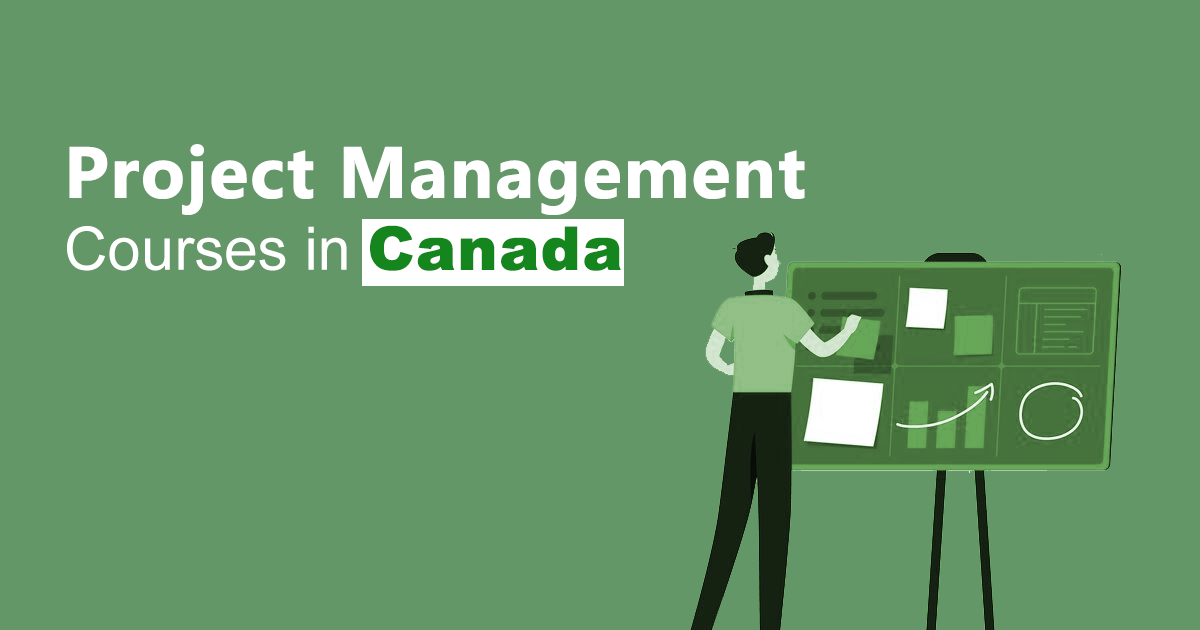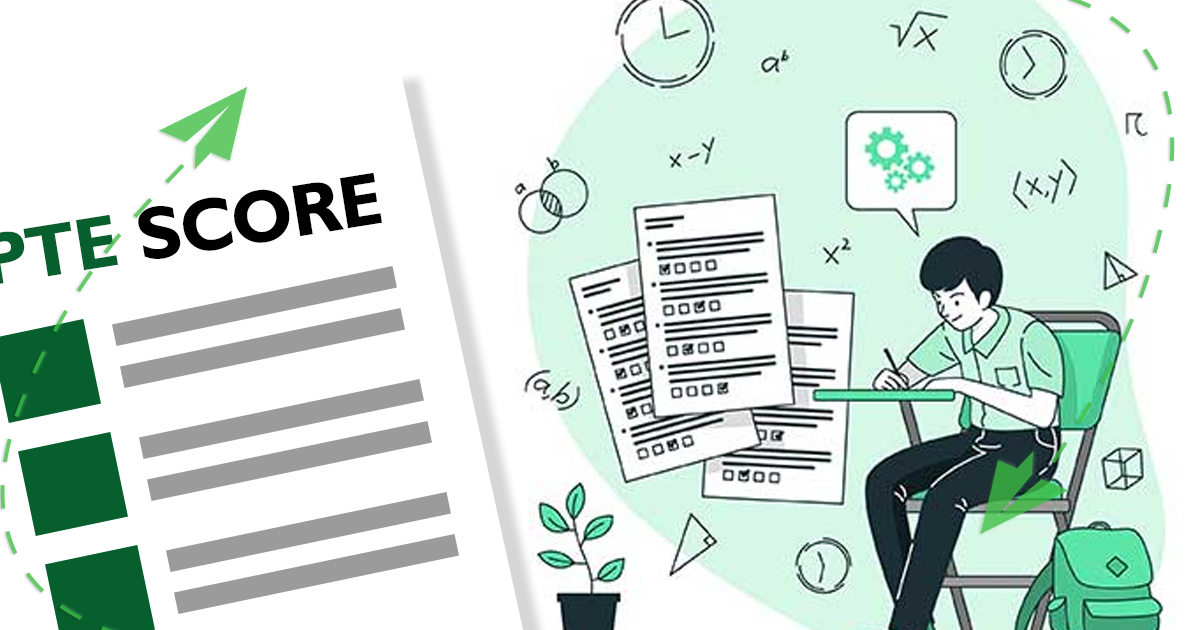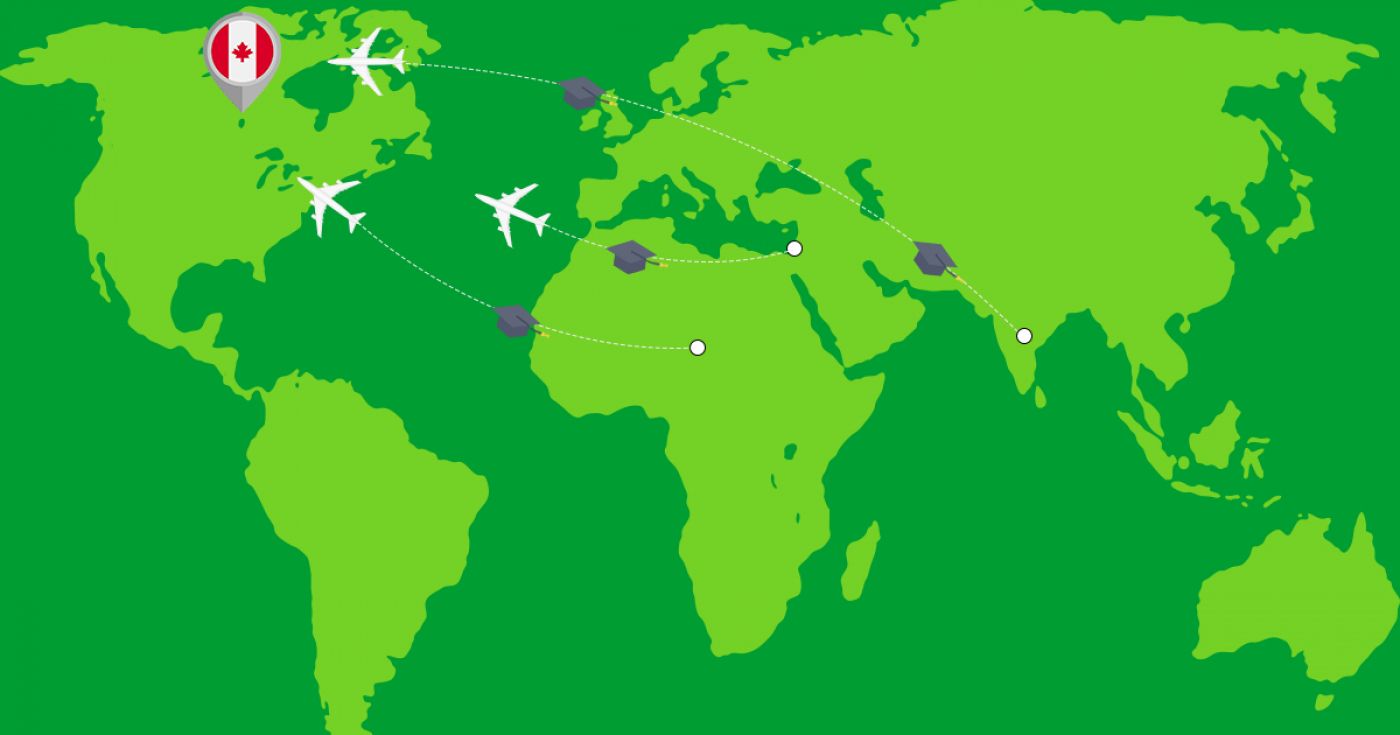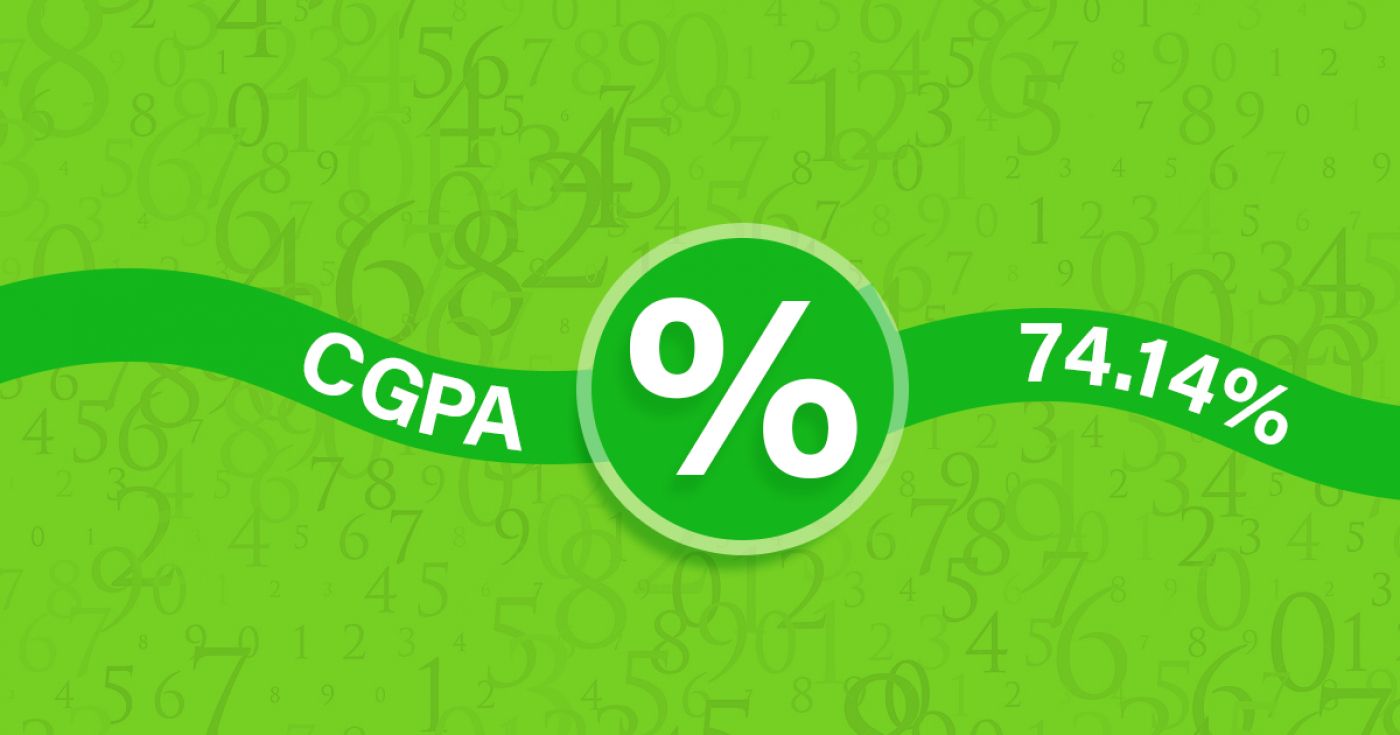Diploma in Paralegal Education
at Humber College North Campus Canada
Overview
Humber’s Paralegal Education diploma program explores the theoretical, procedural and advocacy aspects of law that may be handled by a paralegal licensed by the Law Society of Ontario. You will learn specialized practical skills within the areas of advocacy, legal research, specific courts and administrative tribunals. The course of studies includes business, criminal summary convictions, landlord and tenant, employment law, and alternative dispute resolution. Students will develop strong oral advocacy skills by participating in class and in role plays, as well as in presentations and mock trials before their peers and large audiences.
Courses in ethics and the rules of professional conduct, accounting and entrepreneurship prepare you to create and manage your own paralegal practice.
During the program, you will develop strong communication skills particularly in spoken and written English, essential skills for your future career. Students are required to demonstrate competency in small and large group oral presentations including role plays and mock trials in order to graduate.
Our advisory committee ensures that our program is current and meets high industry expectations.
Learning Outcomes:
Upon successful completion of the program, a graduate will:
- Articulate and adhere to the permitted scope of paralegal practice and the Paralegal Rules of Conduct and complete all work in compliance with the ethical and professional responsibilities of a Paralegal.
- Manage a paralegal practice and operate a small business, within the Paralegal Rules of Conduct relevant to these matters by effectively utilizing administrative and business management skills.
- Describe the fundamental elements of the Canadian government and legal system, including the Constitution Act, the Charter of Rights and Freedoms, the organization of the Canadian court system, and the basic principles of property, business and consumer law.
- Articulate and adhere to the basic principles of tort and contract law.
- Conduct legal research and write legal memoranda and reports.
- Adhere to the civil litigation process, within the permitted scope of paralegal practice, and apply procedural and evidentiary rules related to proceedings in the Small Claims Court.
- Describe the principles of criminal law, and adhere to the rules relating to proceedings under the Criminal Code before a summary conviction court.
- Describe the principles of the law of provincial offences, and adhere to the rules relating to proceedings under the Provincial Offences Act before the Ontario Court of Justice.
- Make effective client representation before courts and administrative tribunals within the permitted scope of paralegal practice.
- Compare and contrast various alternate dispute resolution mechanisms, select an appropriate mechanism as required, and explain to the client the potential consequences of the dispute resolution mechanism.
- Adhere to the basic principles of administrative law, and of general practice and procedure before administrative tribunals.
- Articulate and adhere to the principles of employment law, and the practice and procedure related to the administrative tribunals that deal with employment matters.
- Articulate and adhere to residential landlord and tenant law, and the practice and procedure before the Landlord and Tenant Board.
- Draft all necessary documents in a clear, concise and accurate manner.
- Apply basic accounting principles, terminology, and operations to all paralegal obligations related to trust accounts, and the Law Society’s requirements for book and record keeping.
- Select and use the appropriate computer software necessary to produce correspondence, spreadsheets, memoranda and legal documents.
- Prepare an employment resume in accordance with professional legal standards.
Work Placement
Students complete a work placement of 120 hours in their last semester of the program. This placement fulfills the Law Society of Ontario requirements and is an opportunity to gain practical on-the-job skills and knowledge. With the support of the field placement advisor, students secure a suitable placement within the paralegal scope of practice that meets their needs and area of interest.
30
Application Processing Days
Under Graduate
Program Level
Fact & Figures
Full Time On Campus
Study Mode
24
Duration
Humber College North Campus
Location
Diploma in Paralegal Education Assistant Fee
$16414
Tuition Fee
$12000
Average Cost of Living
$75
Application Fee
Diploma in Paralegal Education Admissions Requirements
- Minimum Level of Education Required: To be accepted into this program, applicants must have Grade 12 / High School Diploma or equivalent including the following required course(s):-
- Grade 12 English (ENG4C or ENG4U or equivalent)
- Three Grade 11 or Grade 12 C, M or U courses in addition to those listed above

Get superfast admissions at top Diploma in Paralegal Education institutes in 2024
Benefits of choosing
➤Admission’s guaranteed at Top institutes across the world.
➤Enjoy exclusive application fee waiver’s with Edmissions.
➤Unlimited FREE Counselling sessions with Edmission’s
Experts
➤Get Tips from industry veterans to crack the IELTS exam in 1
week.
➤Assistance with scholarships, loans, forex, student accommodation and visa guidance.
Work Permit Canada
Students who wish to work in Canada require a work permit to do so. A student in Canada can work part-time during the course of his studies and full-time during holidays and semester breaks and post the completion of their course/program.
Rules for getting a part-time work visa in Canada
You can also work part-time on campus at your university.
Work Permit
Duration
Your part-time work permit will be valid for as long as you have a valid study permit.
Working Hours
20 Hours/Week
As a full-time student, you can work for a maximum of 20 hours a week. However, you can work full- time during holidays and breaks.
Document Required to Work in Canada
List
To apply for a work permit, you will need a study permit that mentions that you are allowed to work part-time on campus.
Social Insurance Number
Study Permit
You will need a Social Insurance Number (SIN) to Service Canada. if you wish to work in Canada during the course of your studies. To apply for the same, you need a valid study permit, and you should be a full- time student at a recognized university.

You can work part-time off-campus if you are studying in the Quebec province.
Duration of Work Permit Canada
Your part-time work permit will be valid for as long as you have a valid study permit.
Work Hours Canada
As a full-time student, you can work for a maximum of 20 hours a week. However, you can work full- time during holidays and breaks.
Document Required to Work in Canada
To apply for a work permit, you will need a study permit that mentions that you are allowed to work part-time on campus.
Social Insurance Number
You will need a Social Insurance Number (SIN) to Service Canada if you wish to work in Canada during the course of your studies. To apply for the same, you need a valid study permit, and you should be a full- time student at a recognized university.
Working after completing your course
In Canada, you will need a work permit to get a full-time job in Canada after finishing your studies. You chose a work permit like the Post-Graduation Work Permit (PGWP) if you wish to stay back in Canada and work full-time.
Visit Government of Canada Website for more detail
Post-Graduation Work Permit (PGWP)
The Post- Graduation Work Permit (PGWP) allows you to work for three years in Canada if you have completed a two years degree or more.
Application
how can i apply
You can either apply online or download the form and mail the application along with the required documents. Pay your fee and then wait for the decision to come.
Application Documents Required
List
To apply for the work visa, you need a degree from a recognized and accredited Canadian University along with an intention to stay and work in Canada only temporarily.
When to Apply?
One can apply for the full-time work permit in the first three months post the completion of their course during which the study permit is still valid.
How long does it take?
90 days
You will have to wait for 90 days for the decision on your work permit.
Duration
3 Years
The work permit is valid for 3 years if you have completed a two years degree program or more.
Fees
CAD 255
The fee for the work permit is CAD 255 plus the holder fee and the work permit processing fee.
Monthly Wages
CAD 1,600
An applicant is guaranteed a minimum salary of CAD 1,600 per month while working in Canada. This amount though varies on the job and the province you are working in.
Work Hours Canada
No Limit
There is no maximum limit, and you can work for as many hours as you want on the full-time work permit.

Required Documents
List
To apply for the work visa, you will need the following documents:
- Forms: IMM 5710, IMM 5476 and IMM 5475;
- Graduation Proof
- Proof of payment of work permit fees
- Copies of your travel and identification documents, passport pages and current immigration document.
Till a decision is made on your work visa, you can continue to work full time. All you need to have is your completed degree, should have applied for the permit before the expiry of your study permit and you should be allowed to work off-campus.
Information
Disclaimer
The information provided about the work permit is true and complete to the best of our knowledge. All recommendations are made without any guarantee on the part of the author or the publisher. The author and the publisher, therefore, disclaim any liability in connection to and with the use of this information.
Detailed Program and Facts
30
Application Processing Days
Full Time On Campus
Program Intensity
Under Graduate
Program Level
24
Duration
Study Visa
Student Visa For Canada
Any student who wishes to study in Canada requires a student visa. Some of the essential information for the application process is given below.
When Should I Apply?
4 to 6 months
Ideally, one should apply for the study permit at least 4 to 6 months before the commencement of your course/program.
Bank Account
No Need!
There is no need for a blocked bank account to apply for a student visa to Canada.
Duration of visa
Course Duration + 3 Months
The student visa is valid for the entire period of your course plus three months.
Time to Wait for Visa
35 Days
It takes time. It might take up to 35 days post your interview for the application process to complete and for you to finally receive your visa.
Appointment
Required
It varies from applicant to applicant, but one may have to take part in one or two visa appointments, namely a medical examination and a visa interview.
How you can apply
Application Process
An applicant can either apply online or offline by visiting a visa application centre and submitting their documents. After the analysis of your application, you might be called for an interview.
Fee
Visa Fee
The visa application fee for Canada is CAD 150.
Minimum Funds
833 CAD, 917 CAD
You require a minimum monthly amount to be deposited into your account to prove that you can sustain yourself while studying in Canada. If you are studying in Quebec, you need to have a monthly minimum of CAD 917, and if you are studying in a province except for Quebec, you need to have a minimum of CAD 833 per month.
Any other expenses
Required
You will have to pay a medical examination fee and a visa application service fee to the tune of CAD 15 if you visit a visa application centre to apply for your visa.

Medical Examination
Required
One has to undergo a series of medical examinations to be deemed fit for a student visa of Canada. The tests mostly include blood and urine tests, chest x-rays and other organ checkups.
Language Skills
Not Required
one doesn’t need to prove their language skills in applying for a Canadian Visa.
Disclaimer: The information provided about the work permit is true and complete to the best of our knowledge. All recommendations are made without any guarantee on the part of the author or the publisher. The author and the publisher, therefore, disclaim any liability in connection to and with the use of this information.
Other Courses by Humber College North Campus,Canada
Skilled Trades
Diploma in Esthetician and Spa Management
Humber’s Esthetician/Spa Management diploma program gives you the business management and hands-on skills you need for a career in the $119 billion Spa Economy (Global Wellness Institute, 2018). On the business side, learn the fundamentals of business writing, marketing, retail operation and day-to-day spa management. Hands-on courses focus on traditional services such as nail care technologies, advanced facial techniques, waxing, body treatments and makeup applications. As well, you will learn advanced medical esthetic services such as OxyGeneo, microdermabrasion, chemical peels, laser and Intense Pulse Light (IPL).
At Humber, you will practise what you are learning and improve your skills at The Humber Spa, a simulated work environment and retail boutique open to the community. Working under the guidance of qualified lab technicians, you will manage the administrative functions of the spa, including frontline responsibilities, retail operations and providing spa services. You will provide a series of treatments including facials, hand and foot care, and body treatments to clientele.
In the first semester, you will be introduced to spa management and client services, physiology of the skin, and professional skin care, and begin to train in traditional esthetic services. In the second semester, you will study computer applications, advanced facial techniques, waxing services and nail care. Later in the program, you will study marketing, cosmetic applications, human resource management and medical spa services.
Work Placement
Two work placements offer students experience working with clients. The placements will be onsite at The Humber Spa.
24 month
Duration
$ 16414
Tuition
Public Safety and Legal Studies
Graduate Certificate in Regulatory Affairs
Humber’s Regulatory Affairs graduate certificate program focuses on developing the concepts, skills and techniques required to work in regulatory affairs in the pharmaceutical, medical device or biotechnology industries. You will gain knowledge of the regulatory system, legislation, procedures and practices which relate to the development, manufacture, quality assurance and marketing of health-related products.
The importance of internationally harmonized regulations and future trends in the industry will be examined by analyzing relevant international and Canadian legislation and regulations. You will study a wide range of regulations and standards including good manufacturing practices, good laboratory practices, good clinical practices, good documentation practices, the International Organization for Standardization (ISO), the Canadian Food and Drugs Act, the Environmental Protection Act, principles of regulatory compliance and inspections, drug establishment licensing, and related standards and guidelines. Teamwork and communication skills are emphasized and you will acquire information technology skills that assist communication and data management specific to regulatory affairs.
You will become familiar with the steps necessary for product submission; how to assemble documents and statistical evidence; the complexity of product registration, negotiation and follow-up; and how these are linked to the federal government and provincial formularies.
Following two academic course-based semesters, students complete a three-month placement that provides opportunities to apply and integrate theoretical knowledge and skills into real-world work settings. Most placements are in the following sectors: pharmaceutical, biotechnology, medical device organizations, government agencies or food industries.
The pharmaceutical industry is facing constant development. As society is aging more focus is being given to the development of new drugs and the improvement of health care. The comprehensive training we provide, combined with previous degrees and work experience, make our students highly marketable. Our graduates work in a spectrum of fields such as pharmaceutics, biotechnology, medical devices, natural health product industries or in government.
12 month
Duration
$ 26202
Tuition
Journalism & Media
Advanced Diploma in Journalism
Humber’s Journalism advanced diploma program is designed to produce dynamic storytellers who are immediately ready to work in a variety of media platforms as reporters, broadcasters, editors, producers and digital content managers. Our program is also ideal for those looking to go into communications or public relations.
As a journalism student, you’ll be given training in hands-on skills that are at the forefront of what’s happening in the industry today including reporting the news, creating broadcast stories, writing feature articles, capturing high quality images and creating compelling digital presentations. Our tight deadlines match industry standards. You will work individually and in teams in the classroom and in the field. You will learn from industry experts and media personalities. As well, you will get a solid grounding in media law and ethics.
We are constantly updating our curriculum to reflect the new reality of journalism in the digital age.
Our program features:
- courses with a focus on digital media, online publishing and developing web content including social media
- hands-on technical and production training including broadcast equipment, digital prepress, TV production and multimedia management
- entrepreneurial skills advice for today’s highly competitive media communications market
- real-life experience working on our online news site humbernews.ca, Humber Et Cetera campus news online, Radio Humber 96.9 FM, Humber TV and magazine productions
- valuable industry exposure and contacts through work placements which help you build your network and resumé
- experienced faculty working in industry bringing extensive and exclusive media connections
36 month
Duration
$ 16414
Tuition
Skilled Trades
Diploma in Cosmetic Management
Humber’s Cosmetic Management diploma program gives you the business base and cosmetic skills that you need for a career in the growing cosmetic and personal care industries.
The curriculum, designed in collaboration with the cosmetics industry, focuses on current market trends and touches on all disciplines that students require to enter the personal care products sector. Courses encompass training in cosmetic and skin care product ingredients, retailing, merchandising, marketing and social media, make-up and skin care application, as well as the skills necessary for running an independent business. Topics such as environmental implications and multicultural sensitivity are embedded in each course.
Our program delivers a range of business-focused cosmetic courses. You will be introduced to the history of cosmetics and fashion; retail buying; cosmetic and fragrance product knowledge; and application including colour theory and skin care fundamentals. You will study business ethics and sustainability, cosmetic selling, and counter management. You will learn how to use relevant computer software and build on your vocational skills with advanced cosmetic application and facial techniques.
Rounding out your education, you will develop your entrepreneurial skills and learn how to plan events and product launches as you plan and execute a skin or cosmetic workshop. You will also learn more advanced application techniques for TV, film and special effects.
Learning Outcomes:
Upon successful completion of the program, a graduate will:
- Assess the chemical composition of cosmetic products and recommend appropriate cosmetic treatments.
- Differentiate ingredients found in cosmetic products and identify their functions and effects.
- Identify and apply various make-up equipment and techniques used for professional application.
- Create a variety of make-up special effects to portray a theme, cater to the requirements of an event, and/or fulfil the demands for TV and Film sets.
- Apply relevant knowledge of anatomy, physiology, wellness, aging issues and skin disorders to the provision of specialized cosmetic application, in addition to health related issues.
- Demonstrate successful characteristics of a professional salesperson applying customer relation principles, diversity practices, sales strategies and promotion techniques.
- Identify, analyze and apply colour relationships and theories in the application of cosmetics and products for diverse skin types.
- Demonstrate effective professional communication skills in verbal and written formats.
- Apply business, legal and accounting principles effectively addressing the business needs of an organization.
- Analyze market needs and apply strategic growth principles.
- Identify the principles of organizational behaviour and human resource management.
- Identify the ecological, ethical and environmental issues of the cosmetic industry.
24 month
Duration
$ 16394
Tuition
Health Sciences, Nursing and Emergency Services
Advanced Diploma in Traditional Chinese Medicine Practitioner
Humber’s Traditional Chinese Medicine (TCM) Practitioner advanced diploma program is the first and only publicly funded program of its kind offered at a postsecondary institution in Canada. This intensive program is grounded in the TCM Practitioner skillset which has been approved by all provincial TCM regulators in Canada and provides students with the skills and professional experience necessary to become a TCM Practitioner in Ontario. Through a combination of theoretical course-based instruction, as well as several clinical placements, you will gain a necessary understanding of Traditional Chinese and Western medicine practices. Moreover, graduates of the TCM Practitioner program will be trained to conduct a TCM diagnosis and develop appropriate treatment plans by utilizing their skills in acupuncture, herbal medicine, clinical practice management, professionalism and safety. This program is also committed to the promotion of evidence-informed practice of TCM through scientific research.
Learning Outcomes
Upon successful completion of the program, a graduate will:
- Critically analyze and evaluate Traditional Chinese Medicine Practitioner (TCMP) theories and treatment methods to develop professional knowledge and skills required for the profession.
- Assess, diagnose and treat patients using Traditional Chinese Medicine Practitioner (TCMP) principles, knowledge and treatment methods including acupuncture, herbal medicine, internal and external medicine.
- Perform safe, ethical and effective TCMP skills within a clinical setting.
- Evaluate patients incorporating a bio-medical approach with Traditional Chinese Medicine Practitioner (TCMP) examination techniques to formulate a TCMP diagnosis and treatment strategy, and perform the treatment in a skillful and professional manner.
- Communicate effectively and educate patients, families, the community and other healthcare providers when providing TCMP practices.
- Advocate for Traditional Chinese Medicine as an effective complementary medicine.
- Adhere to the relevant provincial and federal legislation governing the profession while engaging in safe practices.
- Access current and pertinent research regarding practitioner self-care to maintain a healthy practice.
- Maintain client and business records using professional business practices of a TCMP.
- Establish interprofessional relationships with TCM colleagues and healthcare team members.
- Develop a plan for personal and professional development to enhance work performance and maintain currency in the field.
- Evaluate and implement environmentally related initiatives relevant to the Traditional Chinese Medicine Practitioner (TCMP) profession.
- Apply basic entrepreneurial strategies to identify and respond to new opportunities.
Work Placement
- There are seven mandatory clinical placements that provide students with progressive, professional practice experience in diagnosing, preparing treatment plans, inter-professional collaboration and safe practices. Clinical placements occur throughout the year at community TCM and multi-discipline clinics within the greater Toronto area, as well as at our on-site partner clinic, the Tzu Chi Clinic of Traditional Chinese Medicine. The clinical component of the program offers more than 800 hours of direct patient contact, which exceeds the regulatory body minimum requirement of 500 hours.
36 month
Duration
$ 16414
Tuition
Hospitality, Tourism, Wellness Leisure & Sports
Advanced Diploma in Sport Management
Humber’s Sport Management advanced diploma program prepares you to manage the business of sport. You will develop a thorough knowledge of the structure and functionality of the Canadian sport industry including specific responsibilities and governance structure of organizations; rules and regulations governing sport; coaching standards; tournament hosting and scheduling; and sport sponsorship development. You will also learn the practical, organizational, business, human resources and administrative skills needed to pursue a career in the industry.
A three-day leadership camp at the OELC (Ontario Educational Leadership Centre) helps build communication and leadership skills while guest speakers, practical training and field trips provide added benefits in preparing you for the workplace.
Courses are designed with industry collaboration, ensuring the program is current and relevant. You will learn from full-time professors, managers and directors of sport organizations. Classes are diverse and include guest speakers from organizations such as Maple Leafs Sports & Entertainment, Tennis Canada, the Ontario Basketball Association and various games organizing committees. The program also includes field trips and practical training.
Learning Outcomes
Upon successful completion of the program, a graduate will:
- Assess the socio-cultural parameters that influence sport.
- Identify and work within legal, ethical and moral issues related to sport.
- Complete all work within the governance of agencies, authorities, organizational structure, and functions of governing bodies.
- Provide leadership in a variety of settings.
- Apply, analyze and communicate concepts of sport management.
- Articulate and track changes in marketing concepts, the uniqueness of sport marketing, and sport consumerism.
- Use appropriate information technology including a variety of software programs relevant to the business world.
- Apply, analyze and communicate accounting, economics and finance concepts pertinent to the operation of any organization.
- Apply knowledge of the HR function to the operation of a sport organization.
- Develop customer service strategies to meet the needs of internal and external customers.
- Plan, design and deliver sport and recreation programs.
Work Placement
- Our program includes two work placements in Semesters 5 and 6. Placements occur across industry sectors including professional sport associations, community and amateur sport governing bodies, and private sector sport organizations. These placements provide valuable experience and industry contacts.
36 month
Duration
$ 16414
Tuition
Hospitality, Tourism, Wellness Leisure & Sports
Diploma in Nutrition and Healthy Lifestyle Promotion
Humber’s Nutrition and Healthy Lifestyle Promotion diploma program prepares you for a career promoting health and wellness to individuals and groups of all ages, and encouraging people to live a healthier lifestyle. Unique in nature, it is the only diploma program of its kind in Canada. In this program you will:
- Develop an understanding and knowledge of general and clinical nutrition, sport nutrition and physiology
- Gain valuable hands-on experience coaching and conducting health promotion seminars and workshops in our unique Humber Centre for Healthy Living
- Learn how to relate knowledge of essential nutrients into practical nutritious eating for clients by discovering the techniques of healthy cooking, food demonstration, recipe development and menu planning
- Nutritionally assess and analyze menus and recipes integrating financial, health and culinary criteria
You will have the opportunity to join student branches of the Canadian Association of Foodservice Professionals (CAFP). As student members, you will build on your networking skills in foodservice organizations and have the opportunity to apply to association-sponsored bursaries and scholarships.
This innovative program will provide you with the education and experience to work in the rapidly growing health and wellness industries. The curriculum is founded on evidence-based nutrition information and is taught by registered dietitians and other regulated health-care professionals.
Learning Outcomes
Upon successful completion of the program, a graduate will:
- Conduct assessments of nutritional status, well-being, and lifestyle for clients low to moderate risk and effectively communicate assessment results.
- Apply knowledge of fundamental and clinical nutrition to prescribe appropriate diets, active living, and lifestyle programs to enhance nutritional status, health, and well-being of clients of low to moderate risk.
- Utilize appropriate interviewing and behavior change coaching and counseling skills to promote or enhance nutritional status, health, active living, and well-being of clients.
- Collaborate with individuals in the selection and adoption of strategies to improve their nutritional status, health, and well-being.
- Develop, revise and evaluate food items, recipes, and menus to maximize the nutritional content of healthy eating plans.
- Apply knowledge of the global food supply, sustainability and food technology in the development and revision of recipes, menus and healthy eating plans for individual and groups of clients.
- Develop, implement, and evaluate programs and events which respond to identified needs and interests of clients and maximize the benefits of diet, health, and well-being.
- Contribute to community health promotion strategies to improve the health of individuals, groups, organizations and institutions.
- Assist in the development of business plans for health and wellness programs, activities, and facilities.
- Develop and implement risk management strategies to ensure standards and regulations for food safety and sanitation are met.
- Implement ethical practices and ongoing personal and professional growth and development plans.
- Interact effectively and professionally with clients, staff, and volunteers in health and wellness programs, activities, and facilities.
Work Placement
All students will complete a 15-week experiential learning course involving our on-campus Humber Centre for Healthy Living. Components of this placement include:
- Nutrition awareness events: students develop and deliver group educational workshops, displays and sessions for community, business and industry partners in various settings
- Practising nutrition coaching to Humber students and staff: students provide nutrition education for clients and support them in developing and achieving their health and nutrition related goals. This includes diet assessment, recommendations and development of a client tool kit
24 month
Duration
$ 16414
Tuition
Creative Arts & Design
Certificate of Achievement in 3D Modelling and Visual Effects Production
Humber's 3D Modelling and Visual Effects Production certificate program focuses on both the conceptual and the technical, as you learn to master visual techniques to bring ideas to life. You will develop skills in modelling, texturing and lighting, as well as in visual effects, compositing and digital cinematography. We employ a teaching process and course structure that requires content created in one course to be used to complete assignments in other courses. This “pipeline” process mirrors that of industry, allowing students to make a seamless transition into a real production environment.
The program is designed by artists for experienced traditional artists and animators who want to either develop or transition their skill sets for employment in the 3D and visual effects industries. The faculty take their years of industry experience into the classroom, straight from the studio. Their collective experience and passion in the gaming, television and film industries is the driving force that ensures the program meets the current and future needs of the industry.
January intake scheduling: students will benefit from our streamlined flexible schedule, allowing them to work their day jobs while they study for their dream jobs. Our schedule will have students on campus and in classes on evenings and weekends. Students will study in our state-of-the-art labs equipped with Cintiq tablets and the latest tools and software.
The Humber Advantage
- Program Benefits:
- Flexibility for industry professionals looking to develop new skills
- Approved for second career candidates
- Course curriculum taught and designed by industry professionals
- Teaching process and course structure follows a “pipelines process,” mirroring the realities of a real-world production environment
- Our program allows you to:
- Manage work, family and study in a flexible schedule
- Work your day job as you learn during evenings and Saturdays
- Expand your career possibilities by learning new skills
- Finance your education as you study
- Bring your ideas to life
- Skills You'll Develop
- Modelling
- Texturing
- Lighting
- Visual effects
- Compositing
- Digital cinematography
12 month
Duration
$ 11036
Tuition
Business & Management
Diploma in Business in Marketing
Immerse yourself in the complex and innovative field of marketing with a practical education that will teach you how to create a match between the needs and desires of consumers and the products and services of your organization. Learn how to identify and leverage opportunities in the marketplace; use a range of technologies to create compelling promotional campaigns; and develop effective pricing, packaging and distribution strategies.
The dynamic world of marketing comes to life through a diverse range of courses in everything from marketing research and analytics, marketing communications, professional selling, to digital and social media marketing, and small business planning. Gain important insights into today’s complex marketing landscape, and discover how marketing-savvy companies are using both digital and traditional media to drive sales and enhance customer loyalty.
A mix of individual assignments and group projects combined with practical in-class activities will allow you ample opportunities to think creatively, solve problems and collaborate with others. Make valuable connections with business leaders, and gain key industry insights from experienced instructors who will arm you with a robust marketing tool kit and who will coach you to success.
Work Placement
Practise your new skills in the real world with an 84-hour business work placement in Semester 4. Students find their own placement, which can be paid or unpaid. The business placement advisor maintains a roster of placement opportunities and provides students with direction and assistance in the development of resumés and job search techniques.
24 month
Duration
$ 16414
Tuition
Engineering & Technology
Bachelor of Engineering (Honours) in Information Systems Engineering
Humber’s Bachelor of Engineering program begins with a common platform of first year courses which provide foundational engineering knowledge and skills. Following the first year, the curriculum branches into three different discipline areas: Information Systems Engineering, Mechatronics, and The Built Environment.
The Bachelor of Engineering - Information Systems Engineering discipline prepares you for an interdisciplinary field of study that encompasses rapidly changing, evolving and converging areas of computer, software, networking, telecommunications, mobile applications, internet and cyber security. Following the first year, the curriculum covers the core courses in various subjects such as digital systems, operating systems, embedded systems, communication engineering, software engineering, mobile applications and systems, and more. In the third year, the program branches out to two specializations, Internet of Things (IoT), and Data Network and Security, with eight specialization courses in each.
The program also provides project-based learning, experiential learning with hands-on and practical training, applied research opportunities, and work-integrated learning activities. Students will have opportunities to solve real-world problems while developing professional skills such as teamwork, communication, presentation and project management.
Work Placement
A co-op work program (three consecutive work terms, 420 hour each) ensures that work-integrated learning experiences are woven into the curriculum. This provides students with a contextual understanding of the industry and specific sectors they are training for, as well as recognition of the importance of hands-on experience.
48 month
Duration
$ 19557
Tuition
View All Courses by Humber College North Campus, Canada
Top Study Abroad Exams
Popular Universities to Study Abroad
- University of Waterloo
Waterloo
- University Canada West
Vancouver
- University of Windsor
Windsor
- Cape Breton University
Sydney
- Dalhusie University
Halifax
- Carleton University
Ottawa
- University of Ottawa
Ottawa
- University of Guelph
Guelph
- Explore more colleges in Canada
- University of New Haven
West Haven
- Kent State University
Kent
- Wright State University
Dayon
- San Jose State University
West Haven
- Clark University
Worcester
- Rowan University
Glassboro
- Golden Gate University
San Francisco
- Arkansas
San Francisco
- Explore more colleges in USA
- Coventry University
Coventry
- University of Birminghame
Birminghame
- De Montfort University
Leicester
- Cardiff University
Cardiff
- BPP University
London
- University of West London
London
- University of Nottingham
Nottingham
- University of Warwick
Coventry
- Explore more colleges in UK
- Auckland Institute Of Studies
Auckland
- Massey University - Auckland Campus
Albany
- Eastern Institute of Technology - Auckland Campus
Auckland
- NorthTec - Auckland Campus
Auckland
- Massey University - Manawatu Campus
Palmerston North
- University of West London
London
- Wellington Institute of Technology (WelTec) - Petone Campus
Lower Hutt
- Otago Polytechnic - Dunedin Campus
Dunedin
- Explore more colleges in New Zealand
- Chandigarh University
Mohali
- Parul University
Vadodara
- Sharda University
Greater Noida
- Jain University
Bangalore
- Bennett University
Greater Noida
- Lovely Professional University
Phagwara
- Chitkara University
Rajpura
- Brainware University
Kolkata
- Explore more colleges in India
- Abu Dhabi University
Abu Dhabi
- Gulf Medical University
Ajman
- New York University
Abu Dhabi
- Emirates Aviation University
Dubai
- Higher Colleges of Technology
Dubai
- British University in Dubai
Dubai
- Al Ghurair University
Dubai
- American University in the Emirates
Dubai
- Rochester Institute Of Technology Dubai
Dubai
- Emirates Academy of Hospitality Management
Dubai
- American University of Ras Al Khaimah
Ras Al Khaimah
- Explore more colleges in UAE
- Ras Al Khaimah Medical and Health Sciences University
Ras Al Khaimah
Explore Colleges and Courses in Canada
- Arts & Humanities in canada
- Business & Management in canada
- Natural Sciences & Mathematics in canada
- Engineering & Technology in canada
- Computer Science & IT in canada
- Health Sciences, Nursing and Emergency Services in canada
- Social Sciences in canada
- Creative Arts & Design in canada
- Hospitality, Tourism, Wellness Leisure & Sports in canada
- Environmental Studies & Earth Sciences in canada
Latest Blog Posts
Trending Blog Posts
Search, Shortlist, Apply and get accepted! It’s that Simple to pursue your dream to Study abroad with Edmissions. Our team of experts provide you the right guidance that helps you to take admission in your dream college in countries like Canada, the USA, the UK
© 2021-2024 Edmissions - All rights reserved.
TALK TO OUR EXPERTS











